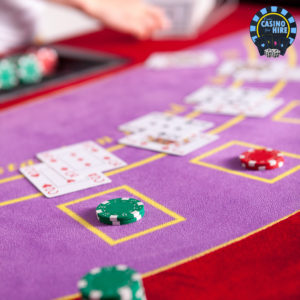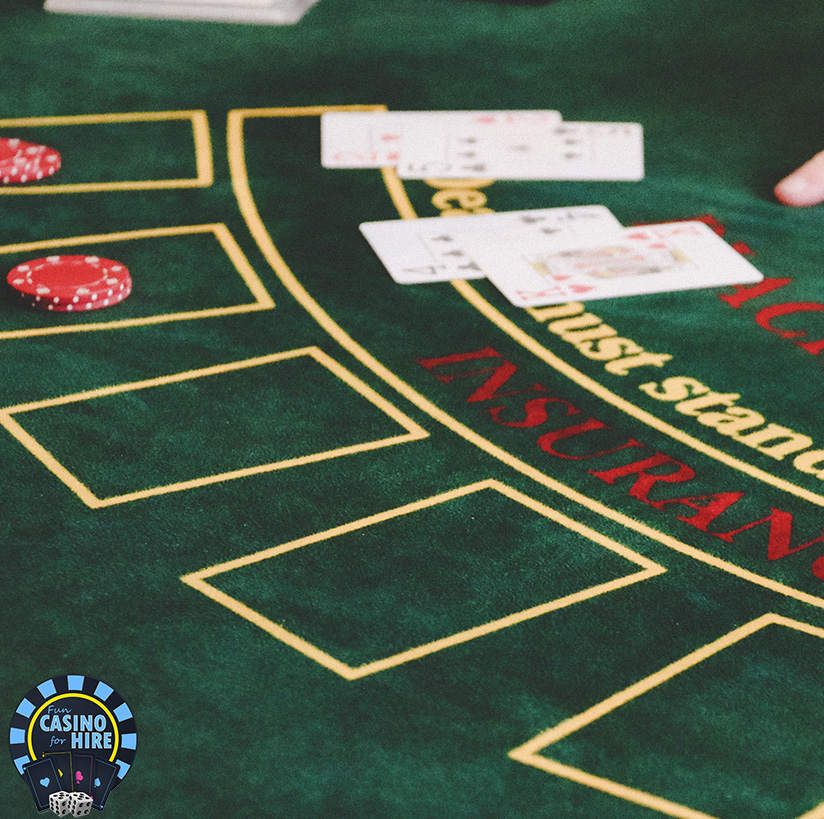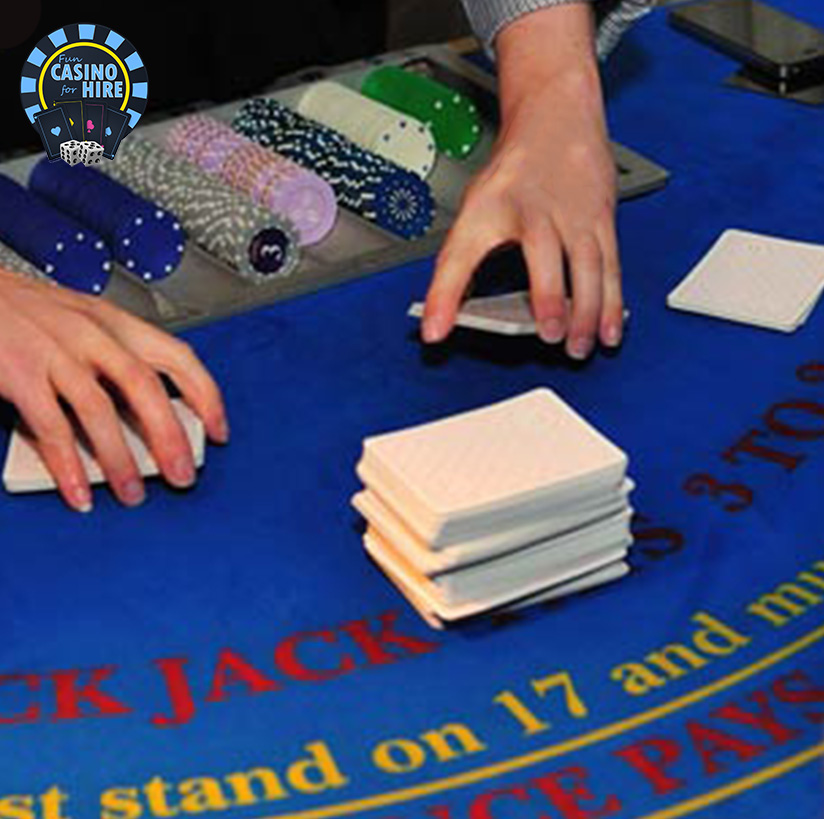Fun Casino BLACKJACK HIre
Blackjack fun casino game is available to hire as a stand alone table or part of a fun casino hire package. Very simple card game, everyone can play this game
BLACKJACK HIRE AT FUN CASINO FOR HIRE
What is available at Fun Casino for hire?
Blackjack is one of Fun Casino For Hire’s most popular games! Most people commonly associate this game with pontoon or 21’s and that is the aim of the game. Each player has to get as near as they can to 21 without going bust (exceeding 21) The croupier loses by exceeding 21 or having a lesser hand than the players. A very simple and fun game suitable for all functions including Weddings, Corporate Functions and Charity Fundraisers to name a few!
TABLE COLOURS
- Multiple Red, Green or Blue Blackjack Tables
SPACE REQUIRED
- 1 x Blackjack table is 1.5m x 1m + space for players
HOW MANY GUESTS CAN PLAY?
- 1 x Blackjack table 10-15 Guests
BLACKJACK BASICS & ODDS
To begin, each player at the blackjack table has a circle or box to place bets in. Each player decides how much to bet on a hand before the croupier deals the cards
Each hand will result in one of the following events for the player:
Lose – the player’s bet is taken by the croupier
Win – the player wins as much as he bet. If you bet $10, you win $10 from the dealer (plus you keep your original bet, of course.)
Blackjack (natural) – the player wins 1.5 times the bet. With a bet of $10, you keep your $10 and win a further $15 from the dealer.
Push – the hand is a draw. The player keeps his bet, neither winning nor losing money.
Although many players may play in a single round of blackjack, it’s fundamentally a two-player game. In blackjack, players don’t play against each other; and they don’t co-operate. The only competition is the croupier. The aim of the game is to accumulate a higher point total than the croupier, without going over 21. Your total is reached by adding up all of your cards
The cards 2 through 10 have their face value, J, Q, and K are worth 10 points each, and the Ace is worth either 1 or 11 points (player’s choice).
At the start of a blackjack game, the players and the dealer receive two cards each. The players’ cards are normally dealt face up, while the croupier has one card dealt until the end when the croupier deals their own hand in competition with the players
The best possible blackjack hand is an opening deal of an ace with any ten-point card. This is called a “blackjack”, or a natural 21, and the player holding this automatically wins unless the dealer also has a blackjack. If a player and the dealer each have a blackjack, the result is a push for that player. If the dealer has a blackjack, all players not holding a blackjack lose.
After the cards have been dealt, the game goes on with each player taking action – in clockwise order starting to dealer’s left. The the player can keep his hand as it is (stand) or take more cards from the deck (hit), one at a time, until either the player judges that the hand is strong enough to go up against the dealer’s hand and stands, or until it goes over 21, in which case the player immediately loses (busts).
When all players have finished their actions, either decided to stand or busted, the croupier takes cards. If the Croupier has a natural 21 (blackjack) with his two cards, he won’t take any more cards. All players lose, except players who also have a blackjack, in which case it is a push – the bet is returned to the player.
If the croupier doesn’t have a natural, he hits (takes more cards) or stands depending on the value of the hand. Contrary to the player, though, the dealer’s action is completely dictated by the rules. The dealer must hit if the value of the hand is lower than 17, otherwise the Croupier will stand. If the croupier has a soft 17 (6 and an ace) then we will stand
If the croupier goes bust, all players who are left in the game win. Otherwise players with higher point totals than the dealer win, while players with lower totals than the dealer lose. For those with the same total as the dealer the result is a push: their stake is returned to them and they neither win nor lose.
Players with a blackjack win a bet plus a bonus amount, which is normally equal to half their original wager. A blackjack hand beats any other hand, also those with a total value of 21 but with more cards
GALLERY




